This report will provide insights and information related to projects and project-related transaction details.
This report will help the organization with project management and analyze key accounts. The key elements of this report are:
Project Overview: Project Overview serves as a valuable tool for project portfolio management. Project managers can compare and prioritize projects based on their performance metrics, allowing them to allocate resources and make strategic decisions that optimize the overall portfolio’s success. By leveraging the information and analysis provided by the Project Overview, project managers can make informed decisions, streamline project operations, and improve overall project performance.
Project Details: Project Details help the project manager identify the factors contributing to top-margin projects, such as efficient resource allocation, effective cost control, or high-value client relationships. Conversely, they can pinpoint the factors influencing bottom-margin projects, allowing them to take corrective actions to improve profitability. This analysis empowers users to make data-driven decisions regarding project selection, resource allocation, and pricing strategies.
Cost Analysis: The ‘Cost Analysis’ tab provides a comprehensive comparison between budgeted costs and actual costs, allowing users to analyze cost variations by category, role, and month. This analysis helps in understanding the financial performance of projects and identifying areas where cost control measures can be implemented. Users can gain a deeper understanding of project costs, identify areas for improvement, and implement effective cost control measures.
Revenue Analysis: The ‘Revenue Analysis’ tab provides a comprehensive comparison between budgeted revenue and actual revenue, allowing users to analyze revenue variations by category, role, and month. This analysis helps in understanding the financial performance of projects and identifying areas where revenue generation can be optimized.
Resourcing Details: With Resourcing, project managers gain a deeper understanding of resource utilization and allocation. Resourcing facilitates accurate project planning and forecasting by providing real-time data on resource performance. By comparing the estimated and actual hours, project managers can refine their future project estimates and allocate resources more effectively.
Revenue by Department: The ‘Revenue by Department’ tab provides a detailed breakdown of revenue, showcasing the revenue split by department and geographical location. This analysis offers valuable insights into the revenue contribution of each department and allows users to understand revenue trends across different geographic regions.
The Project Overview tab summarizes information of the project transactions like ‘Day Sales Outstanding’, ‘Project Revenue’ and ‘Gross Profit’. The project manager can view and analyze the performance of all projects.
The second tab, Project Details, consists of project performance information such as budgeted amount, budgeted hours, revenue, and % completed.
The third tab, Cost Analysis, contains cost comparison of budgeted and actuals by category, by role, and by month.
The fourth tab, Revenue Analysis, consists of revenue comparisons between budgeted and actuals by category, by role, and by month.
The fifth tab ‘Resourcing Details’ consists of project-wise details of resource estimated hours, resourcing actual hours, resource estimate to complete hours, resourcing estimated variance, and resourcing hours variance%.
The sixth tab ‘Revenue by Department’ consists of project-wise revenue split by department and geolocation.



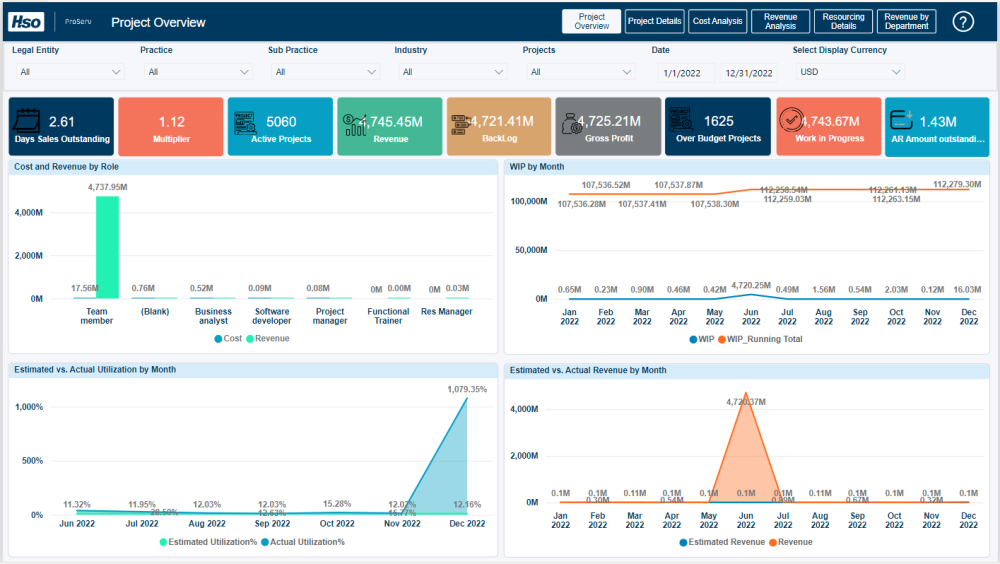
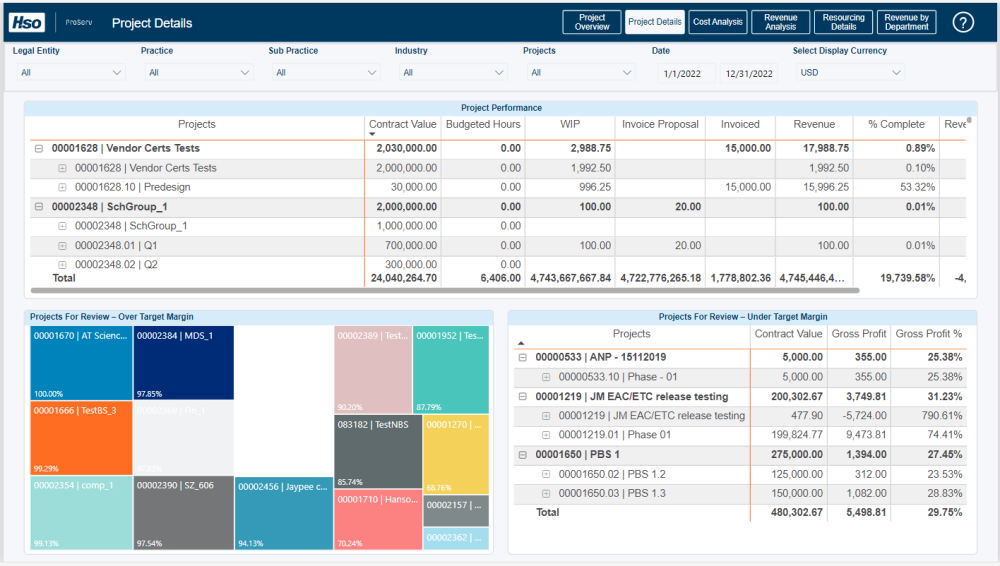
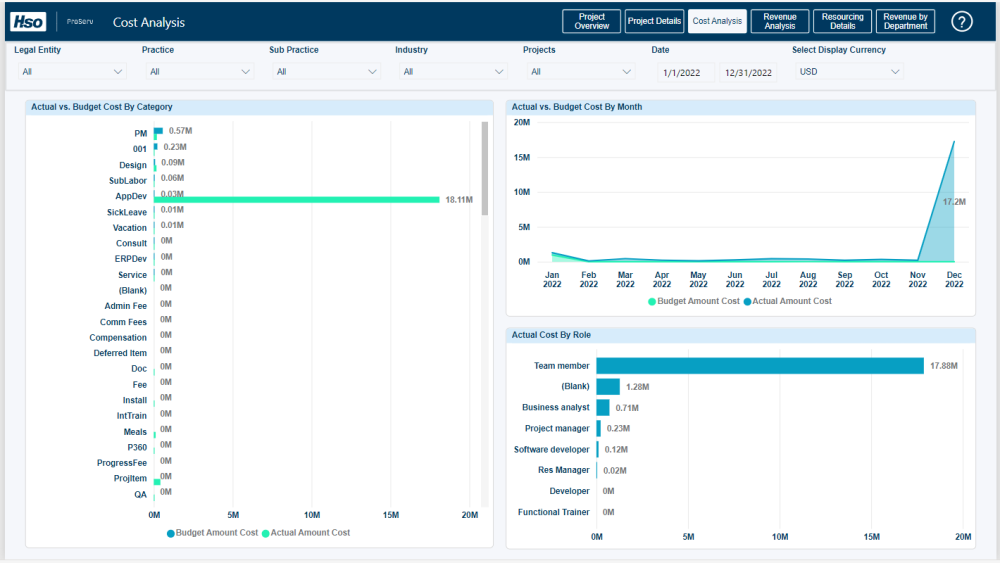
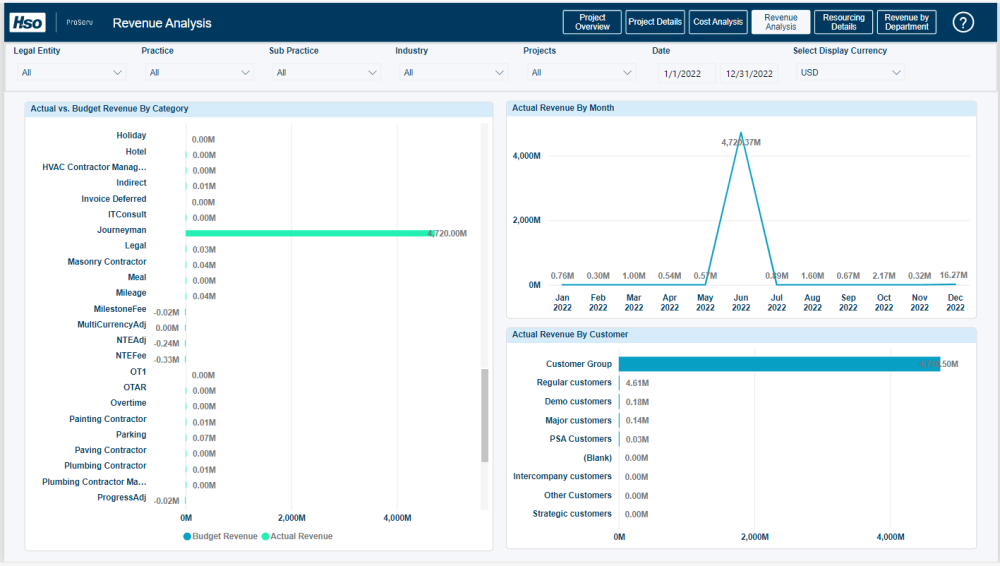
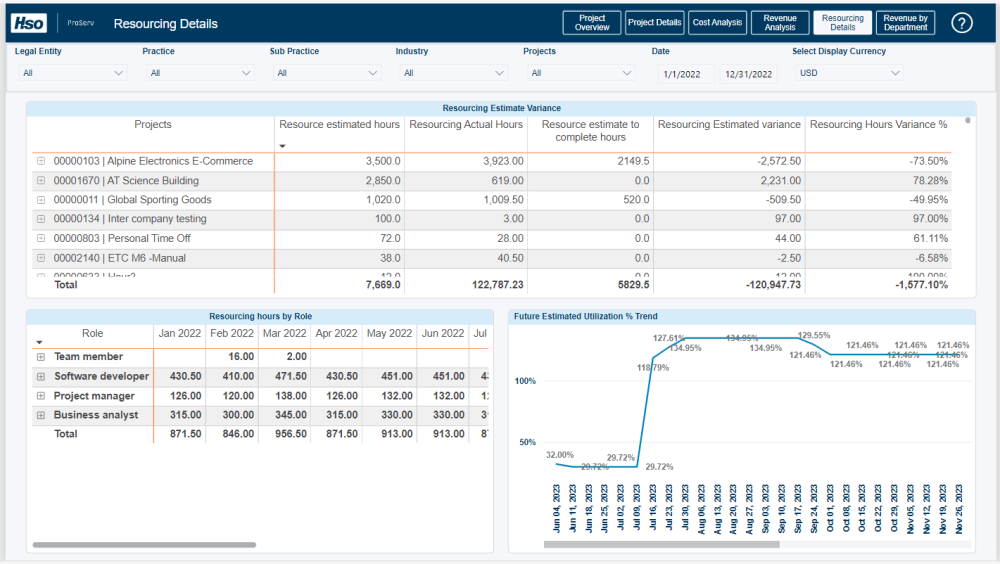
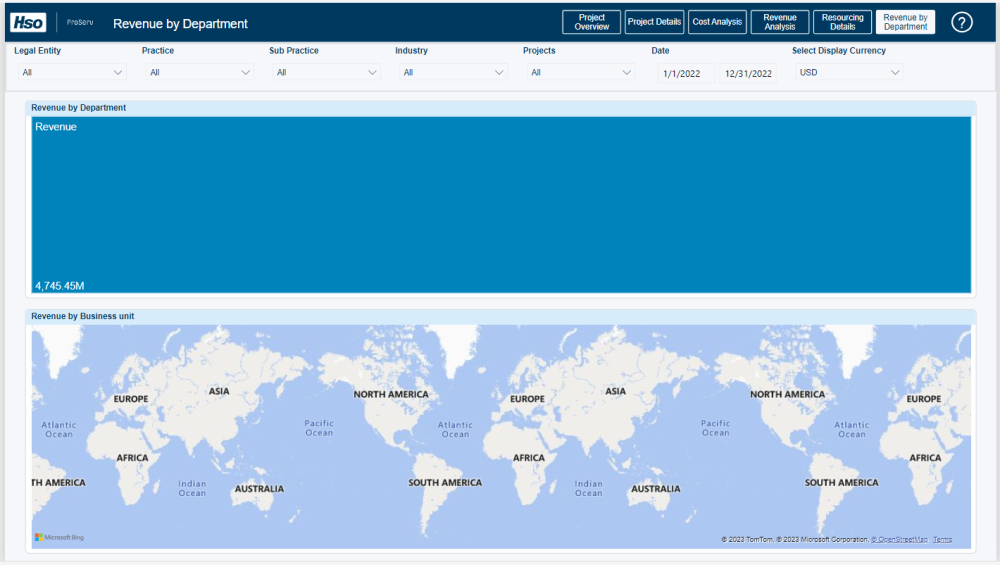
Post your comment on this topic.